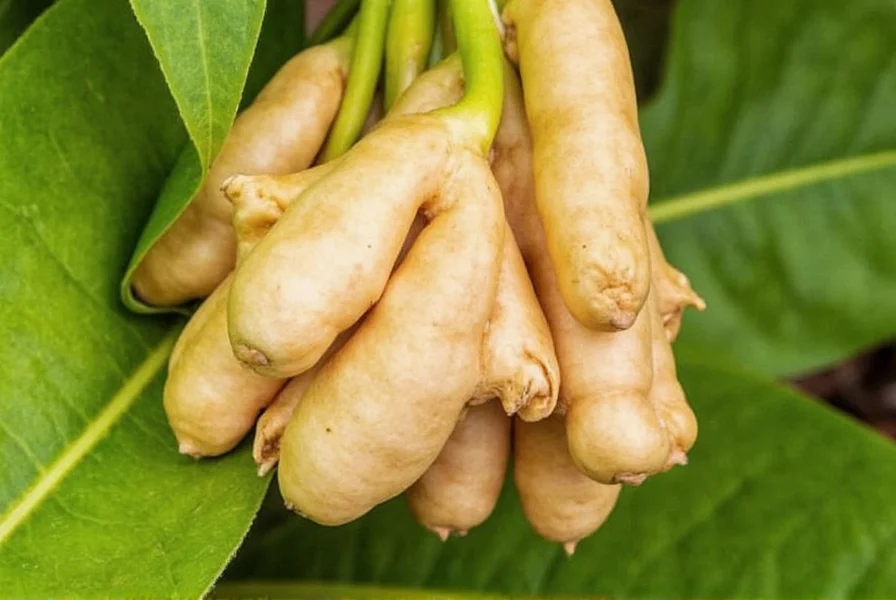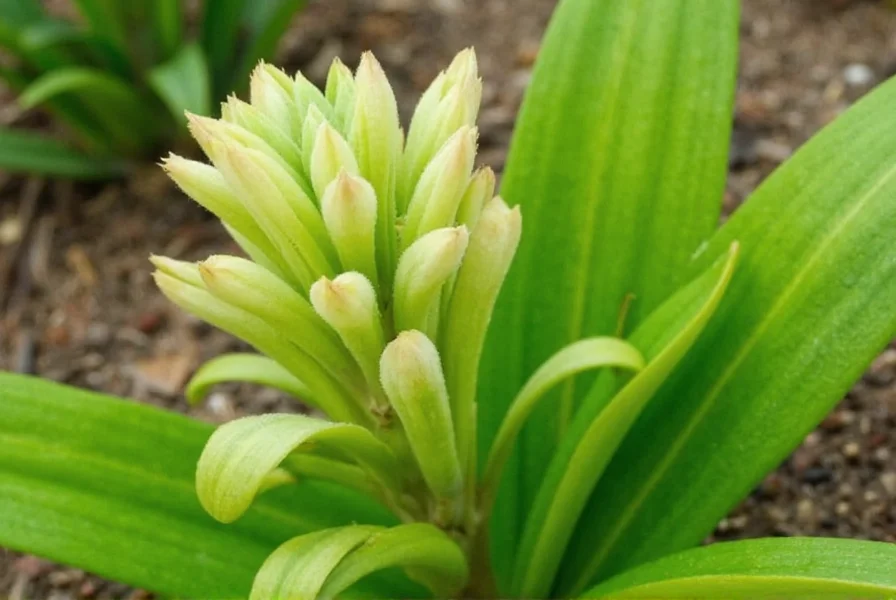Homegrown ginger offers superior flavor and freshness compared to store-bought options while providing a rewarding gardening experience. Whether you have a spacious garden or just a sunny windowsill, cultivating this versatile spice plant is accessible to nearly all home gardeners. This comprehensive guide details the proven methods for successfully growing ginger at home, from selecting the right rhizomes to harvesting your spicy bounty.
Understanding Ginger Growth Requirements
Ginger (Zingiber officinale) isn't actually a root but a rhizome—an underground stem that stores nutrients. This distinction matters because it affects how the plant grows and what conditions it needs. Unlike true roots that grow downward, rhizomes grow horizontally, sending up shoots while expanding laterally.
Most home gardeners achieve best results with common culinary ginger, though some specialty varieties like galangal or turmeric can also be grown using similar methods. Standard ginger typically reaches 2-3 feet in height with attractive leafy stems, making it both productive and ornamental.
Essential Materials for Growing Ginger at Home
Starting your ginger growing journey requires minimal equipment. Here's what you'll need:
| Item | Specifications | Why It Matters |
|---|---|---|
| Ginger rhizomes | Fresh, plump with visible 'eyes' (buds) | Healthy starting material ensures successful sprouting |
| Container | 12-16 inches deep, excellent drainage | Prevents waterlogging while accommodating horizontal growth |
| Soil mix | 50% potting soil, 30% compost, 20% perlite | Provides nutrients while ensuring proper drainage |
| Watering can | Narrow spout for precise watering | Helps maintain consistent moisture without overwatering |
Step-by-Step Guide to Growing Ginger at Home
Selecting and Preparing Ginger Rhizomes
The quality of your starting material determines your success. When growing ginger from grocery store rhizomes, choose plump, firm pieces with multiple visible 'eyes' or buds. Organic ginger works best as conventional varieties often receive growth inhibitors. Soak the rhizome in water overnight to encourage sprouting before planting.
Divide larger rhizomes into 1-2 inch sections, ensuring each piece has at least one eye. Allow cut surfaces to dry for 24 hours to form a protective callus that prevents rot.
Planting Your Ginger
Fill your container with the prepared soil mix, leaving 2-3 inches of space below the rim. Place rhizome sections horizontally with eyes facing up, covering them with 1-2 inches of soil. Water thoroughly until drainage appears, then position in a warm location with indirect light.
For growing ginger in containers outdoors, wait until soil temperatures consistently exceed 70°F. In most climates, this means planting in late spring after the last frost. Ginger thrives in partial shade—morning sun with afternoon protection works best.
Watering and Maintenance Schedule
Maintain consistent soil moisture without saturation. Check daily by inserting your finger 1 inch into the soil; water when the top layer feels dry. During active growth (spring through summer), this typically means watering 2-3 times weekly.
Apply a balanced liquid fertilizer every 4-6 weeks during the growing season. Reduce watering as leaves begin yellowing in late summer or early fall, signaling the plant is entering dormancy.
Temperature and Light Requirements
Ginger prefers warm conditions between 70-90°F. Temperatures below 50°F will stunt growth, while frost will kill the plant. In cooler climates, grow ginger in containers you can move indoors when temperatures drop.
For optimal indoor ginger plant care, position near an east-facing window or provide 6-8 hours of filtered sunlight. Avoid direct afternoon sun which can scorch leaves. If growing under artificial lights, use full-spectrum LEDs for 10-12 hours daily.
Troubleshooting Common Ginger Growing Problems
Yellowing Leaves
Yellow leaves often indicate overwatering or poor drainage. Check soil moisture and adjust your watering schedule. If the problem persists, gently remove the plant and inspect rhizomes for soft, mushy spots indicating rot. Trim affected areas and replant in fresh, well-draining soil.
Slow or No Growth
If your ginger shows little growth after 6 weeks, consider these factors:
- Temperature too low (below 65°F)
- Insufficient light (needs 6+ hours of indirect sun)
- Rhizome was treated with growth inhibitors
- Planting depth too deep (should be 1-2 inches below soil)

Harvesting and Storing Your Homegrown Ginger
You can harvest ginger at different stages:
- Young ginger: After 4-5 months for tender, less fibrous rhizomes
- Mature ginger: After 8-10 months when leaves yellow and die back
For how long does ginger take to grow to full maturity, most varieties require 8-10 months from planting to harvest. To harvest, carefully dig around the edges of the container or garden bed, exposing the rhizomes without damaging them. Gently lift the entire plant, then separate the rhizomes from the stems.
After harvesting, cure ginger by air-drying for 2-3 days in a shaded area. Store in a cool, dark place or refrigerate for up to 3 weeks. For longer storage, freeze peeled ginger or preserve in vinegar.
Continuous Harvest Techniques
Instead of harvesting the entire plant, you can practice 'cut-and-come-again' harvesting. Carefully dig beside the main rhizome cluster and remove only what you need, leaving the plant intact to continue growing. This method works best with mature plants (6+ months old) and allows for year-round harvesting in suitable climates.

Optimizing Your Ginger Growing Success
For the best results with growing ginger at home, consider these professional tips:
- Start with multiple rhizome sections to increase your chances of success
- Mulch container-grown plants to maintain consistent soil temperature
- Use terracotta pots which provide better air circulation than plastic
- Rotate containers weekly for even light exposure
- Keep humidity above 50% for indoor plants, especially in winter
Remember that ginger naturally grows in tropical forest understories, so replicating those warm, humid, partially shaded conditions yields the best results. With proper care using these how to grow ginger at home techniques, you'll enjoy fresh, flavorful ginger while adding an attractive plant to your home or garden.
Frequently Asked Questions
Can I grow ginger from grocery store ginger?
Yes, you can grow ginger from grocery store rhizomes, though organic varieties work best as conventional ginger often receives growth inhibitors. Choose plump, firm pieces with visible 'eyes' or buds, soak overnight, and plant horizontally with eyes facing up in well-draining soil.
How long does it take to grow ginger at home?
Ginger typically takes 8-10 months to reach full maturity from planting to harvest. You'll see sprouts emerge in 2-4 weeks, but the rhizomes need the full growing season to develop substantial size. Some gardeners harvest 'young ginger' after 4-5 months for more tender, less fibrous rhizomes.
Why is my ginger plant not growing?
Common reasons for slow or no growth include temperatures below 65°F, insufficient light (needs 6+ hours of indirect sun), planting depth too deep (should be 1-2 inches below soil), or rhizomes treated with growth inhibitors. Check these factors and be patient, as ginger can take 3-4 weeks to show visible growth, especially in cooler conditions.
Can ginger be grown indoors year-round?
Yes, ginger grows well indoors year-round with proper conditions. Place in an east-facing window or provide 6-8 hours of filtered sunlight daily. Maintain temperatures between 70-90°F and humidity above 50%. Water when the top inch of soil feels dry, and fertilize monthly during the growing season. Indoor plants may grow slower but can still produce harvestable rhizomes.
What's the best soil for growing ginger plants?
The ideal soil mix for ginger contains 50% quality potting soil, 30% compost, and 20% perlite for optimal drainage. Ginger requires loose, well-draining soil that retains some moisture without becoming waterlogged. Avoid heavy clay soils which can cause rhizome rot. The soil pH should be slightly acidic to neutral (5.5-7.0) for best results.










 浙公网安备
33010002000092号
浙公网安备
33010002000092号 浙B2-20120091-4
浙B2-20120091-4